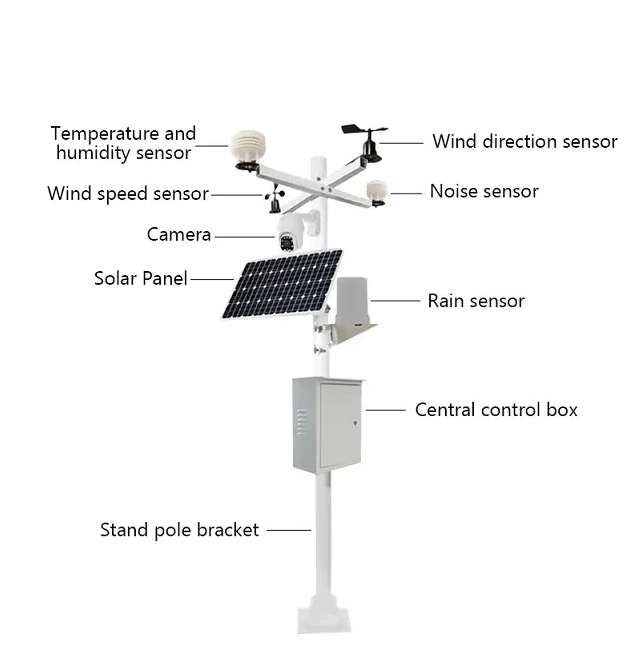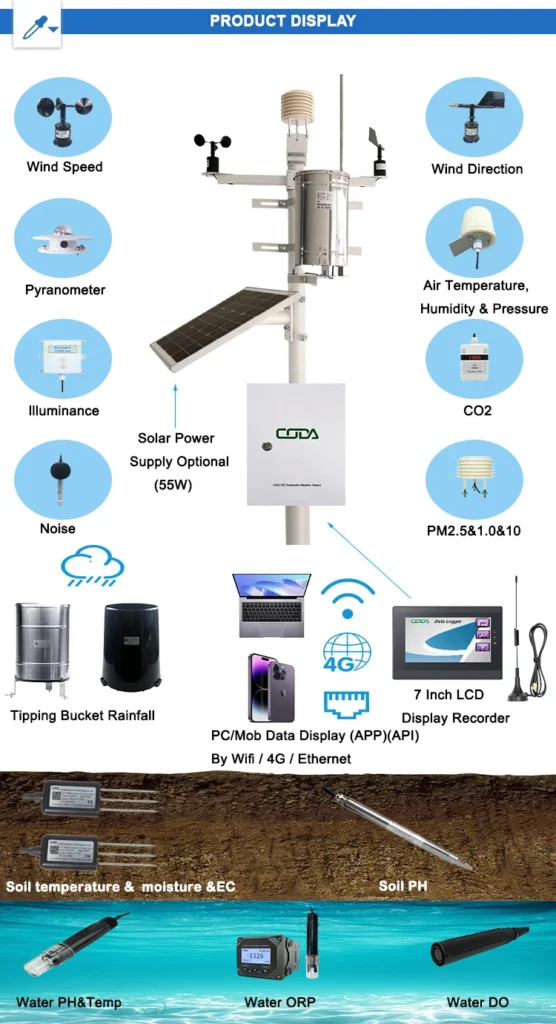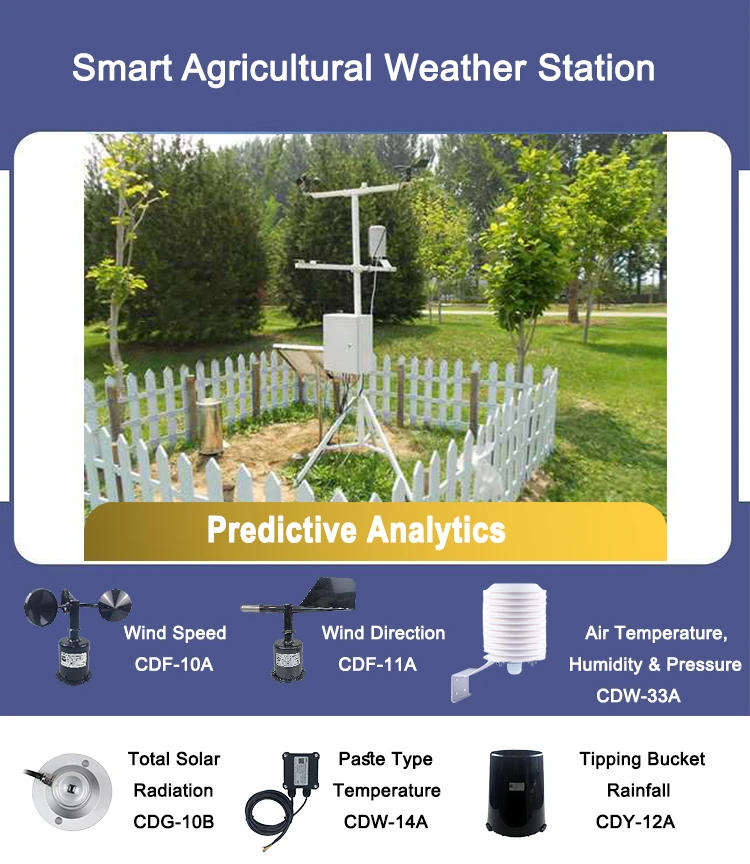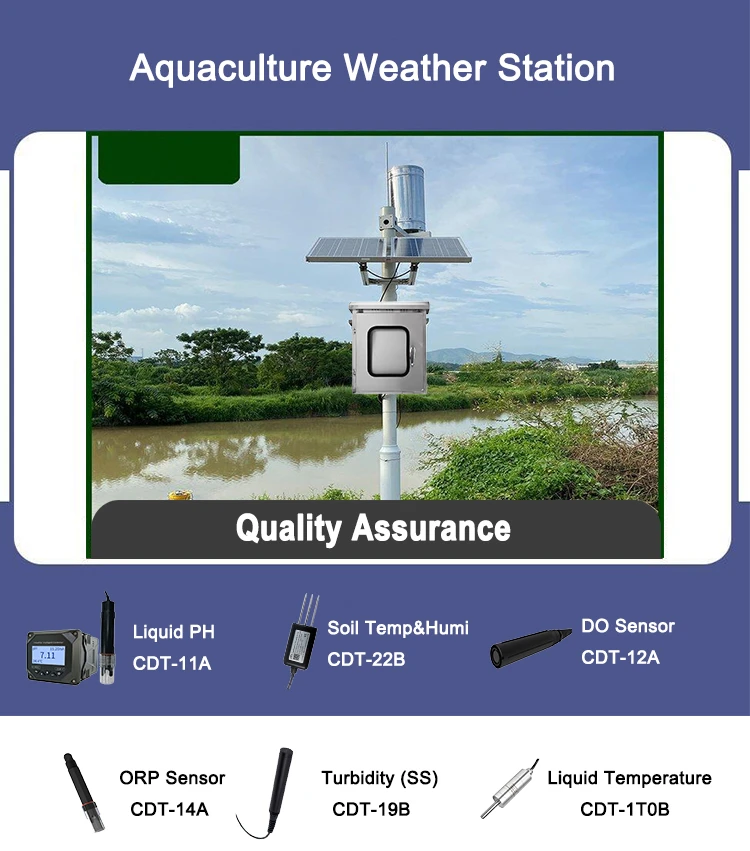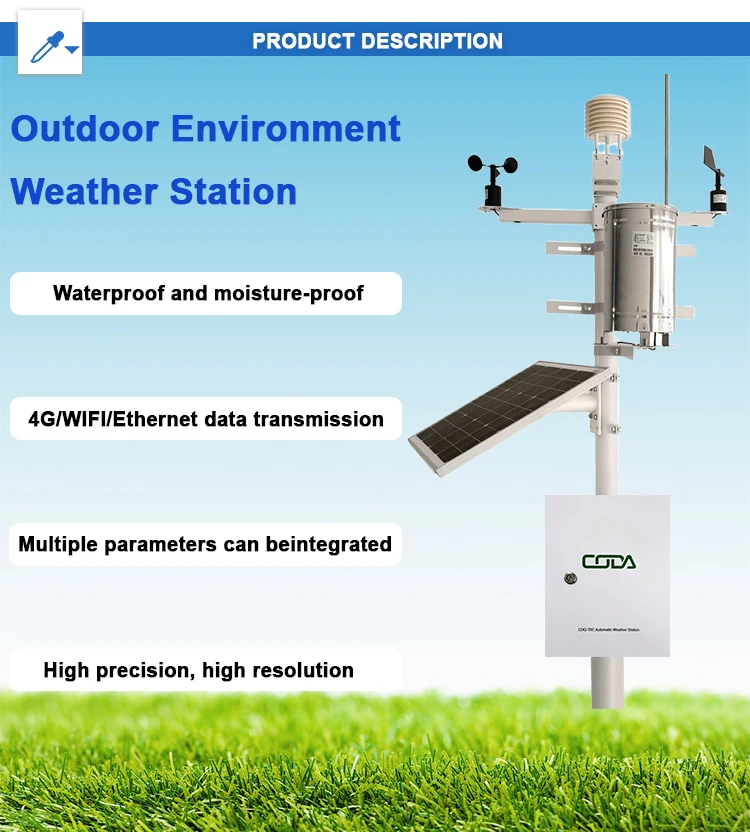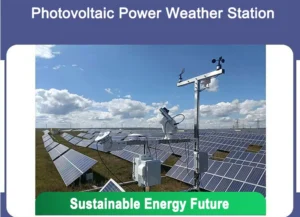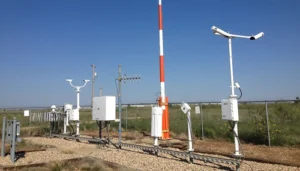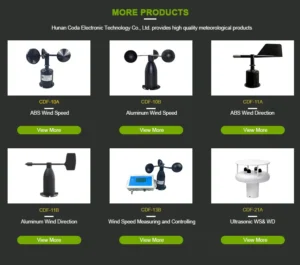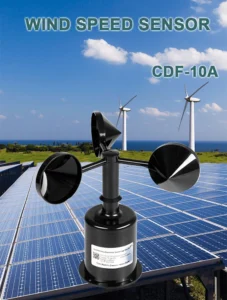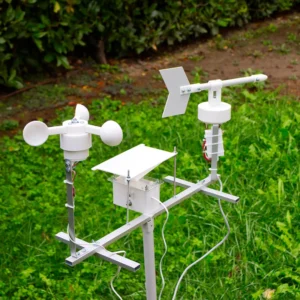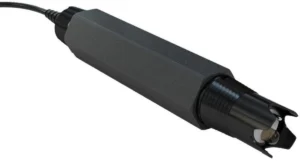How Weather Stations Measure Climate Parameters
Are you searching for a tool to collect acurite weather stations data for site-specific predictions? People know this tool as a ambient weather stations. Equipped with multiple sensors, it gathers atmospheric condition data to produce dependable weather reports. Grasping weather stations parameters is essential for agricultural research, hydrological tracking, and numerous industrial uses.
By comprehending these parameters and their significance, you can determine which sensors are essential for your needs. A standard weather station measures wind speed, atmospheric temperature, humidity, and pressure. However, depending on your application, the required parameters may become more complex.
We aim to guide you through these weather stations parameters and their practical applications. Let’s explore the basics of weather stations and delve into the intricate methods of data transmission and processing.
Function of Weather Stations
Acurite weather stations gather meteorological information from the troposphere, the atmosphere’s lowest layer. Meteorologists utilize this data to forecast weather precisely and provide alerts. Depending on their purpose, weather stations can vary in sensor configurations. Here are some types of weather stations and their roles:
General Weather Station:
These are ideal for predicting weather or climate conditions across geographic areas. A single weather station can work for open fields in agriculture. However, urban areas need a network of stations. This is because land use and topography can vary greatly. Such stations typically include sensors for:
– Wind Speed
– Wind Direction
– Atmospheric Temperature
– Air Humidity
– Atmospheric Pressure
– Rainfall
– Solar Radiation
Agricultural Weather Station:
Understanding environmental conditions is critical for maximizing crop yields. Modern agricultural stations use advanced sensors to check solar and soil conditions. They collect data on temperature, rainfall, and sunlight. This helps prevent crop damage. In addition to general weather station sensors, agricultural stations may include:
– PAR Sensor
– Soil Temperature
– Soil Moisture
– Carbon Dioxide
– Soil pH
– Soil Salinity
Scenic Area Weather Station:
These acurite weather stations help keep tourists safe. They also help plan for emergencies in beautiful, remote areas. They enhance the visitor experience by identifying the best times for visits based on environmental data. Sensors specific to these stations include:
– UV Radiation
– Ground Temperature
Greenhouse Monitoring Station:
In controlled environments like greenhouses, additional sensors are needed for monitoring plant growth and production. These stations provide detailed insights into internal weather conditions, facilitating better environmental management. They often include sensors for:
– Atmospheric Temperature, Humidity, and Pressure
– Carbon Dioxide
– Illuminance
– Soil Temperature and Moisture
– Soil pH, Salinity, and EC
– PAR Sensor
– Solar Radiation
Understanding these sensors and their roles in different weather stations can significantly enhance decision-making across various fields.
Photovoltaic Power Generation Weather Station
This self-sufficient weather station operates without external power, using photovoltaic cells to generate the electricity it needs. It is capable of continuously transmitting data and status information to the owner through various communication methods. If any issues arise, the owner can assess the station’s condition remotely and carry out maintenance as needed.
These acurite weather stations are particularly suited for long-term independent operation. Unlike standard weather stations, they are equipped with additional sensors such as:
– Solar Radiation Sensor
– Hall Current Sensor
– Hall Voltage Sensor
– Photovoltaic Panel Temperature Sensor
Understanding Weather Station Parameters
Now that we know the parameters measured by ambient weather stations, let’s look at each one closely and understand why it matters.
Weather Monitoring Parameters
– **Wind Speed and Direction:** These ambient weather stations parameters are crucial for aviation, weather forecasting, and industrial calculations related to emissions. Modern devices use motors and resistive circuits. They usually measure wind speeds from 0 to 45 m/s. These devices also determine the wind’s direction.
– **Atmospheric Temperature:** This is measured with thermoresistive devices that alter resistance and voltage based on temperature changes. Capable of measuring from -40 to 60°C, atmospheric temperature is a key component of weather data.
– **Atmospheric Humidity:** Humidity is important for predicting clouds and rain. Sensors that use metal oxide capacitors measure it. These sensors detect changes when humidity levels go up or down.
– **Atmospheric Pressure:** By measuring pressure, weather conditions can be forecasted. Silicon capacitive pressure sensors, which adjust capacity with pressure changes, are popular for these measurements.
– **Rainfall:** Tipping bucket sensors provide reliable rainfall measurements. They use buckets with a fixed volume that tip when filled, counting the number of tips to quantify rainfall.
– **Solar Radiation:** Measuring this helps predict ground temperature, evaporation rates, agricultural water needs, and air pollution. A straightforward photovoltaic converter measures solar radiation.
Agricultural Monitoring Parameters
– **PAR Sensor:** Detects light wavelengths between 400 and 700 nm necessary for photosynthesis, crucial in agriculture and eco studies.
– **Soil Temperature and Moisture:** We monitor these using sensors with probes. These probes have thermistors and capacitance systems. They are important for managing greenhouse and plant health.
– **Carbon Dioxide:** Monitoring CO2 levels allows for proactive greenhouse ventilation adjustments. Popular sensors use nondispersive infrared technology to detect CO2 levels.
– **Soil pH:** The ideal pH for most plants is between 5.5 and 6.5. Monitoring soil pH with pen-type monitors can significantly impact yield in horticulture.
– **Soil EC and Salinity Sensor:** Measures soil conductivity, an indicator of salinity levels, which affect germination and plant growth.
– **UV Radiation:** UV-B rays can slow down plant growth. It is important to monitor these rays to keep plants healthy with the right actions.
Scenic Site Condition Parameters
– **Ground Temperature:** Rising temperatures affect tourism at scenic sites. Monitoring ground temperatures helps find the best times to visit. A range of 25-30°C is considered perfect for activities like barefoot walks.
– **Illuminance:** Proper lighting enhances site appeal while mitigating light pollution’s environmental impact. Monitoring ensures safety in areas where uneven terrains could pose risks.
Self-Powered Weather Station Monitoring Parameters
– **Hall Current Sensor:** These sensors check the health of solar cells or batteries. They give live data without being intrusive.
– **Hall Voltage Sensor:** They show battery health by keeping voltage levels steady. This is important for self-powered weather stations.
– **Photovoltaic Panel Temperature:** Directly affecting panel output power, temperature monitoring helps owners optimize performance efficiently.
Working Principle of Weather Stations
The functionality of acurite weather stations largely hinges on the manufacturer’s design. Typically, these designs integrate sensors that produce analog signals. These signals then convert to digital form using analog-to-digital converters (ADCs). Within the weather stations, a microcontroller or computer processes this data, handling calculations, filtration, formatting, and storage.
Subsequently, devices transmit data to a central control computer or database through cellular networks, satellite links, or WiFi. The central system can deploy various codes and algorithms to predict weather patterns. In applications beyond weather tracking, it can provide users with valuable statistical data. In summary, the typical operations of weather stations include:
– Collecting Sensor Data
– Converting Analog Data to Digital
– Processing Raw Data
– Transmitting Data to a Central System
– Performing Data Examination and Monitoring
AI and ML in Meteorological Predictions
The integration of AI and ML is enhancing the precision of modern weather forecasting systems. Researchers leverage these technologies to improve the accuracy of predictions. An example is Google’s GraphCast. It provides reliable 10-day forecasts. This service is better than the old High-Resolution Forecast (HRES).
The HRES is from the European Centre for Medium-Range Weather Forecasts (ECMWF).
Coda Sensor has specialized in professional weather station solutions for over 13 years. Please contact us for more information about our products and to discuss your specific needs. We offer solutions for aquaculture, weather monitoring, and environmental monitoring.
FAQ
1. Is a Weather Station necessary for my agricultural operation?
Safeguarding crops from disease and pests is crucial. Ambient weather stations provide essential data on temperature, humidity, rainfall, and soil characteristics, enabling timely interventions to enhance germination and plant growth. Installing a weather station on your farm delivers continuous data access, eliminating the need for physical monitoring visits.
2. How to find the perfect weather for tourism?
The best time to visit a scenic place often depends on the weather. Key factors include humidity, temperature, wind speed, and sunlight. Popular destinations often have weather stations offering live data and condition forecasts accessible on official government or organizer websites. Thanks to progress in AI and machine learning, contemporary weather predictions can be precise for as long as 10 days.
3. What function does a weather station system serve?
Ambient weather stations aim to provide real-time statistical information on atmospheric, soil, and equipment conditions. These systems have many sensors. They measure temperature, humidity, wind speed and direction, rainfall, soil traits, solar radiation, and Photosynthetically Active Radiation (PAR). These sensors are very useful in agriculture, transportation, tourism, meteorology, and other areas.
